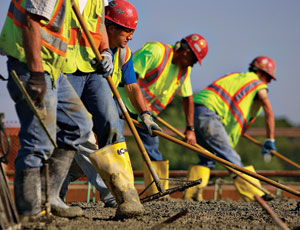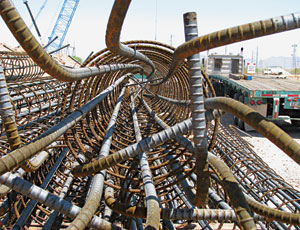The process of construction is a work of art in itself, often covered up by the utility or beauty of the project’s final form. Construction often starts out under conditions that are difficult, challenging and sometimes dangerous, as the following pages of ENR photo-contest winners demonstrate. Still, the skills, will and financial ability to succeed usually persevere and the built environment and society are almost always better for the improvement.

The will to proceed with major projects is sometimes the most important element in the construction equation. Some countries have the will to accomplish great works because they never had much and are impatient to catch up with or even outstrip more developed nations. But some nations with more sophisticated infrastructure and development have become complacent with their existing structures. They allow time to take its toll on their nations’ condition and technology while frittering away money and power on untoward political adventures.
The power of both the needs and wants may come together as the world embarks on an economic recovery effort of almost unprecedented proportions. The construction industry potentially will play a great role. While actual construction is the most photogenic part of the industry, that brick-and-mortar work is supported by many millions of people behind the scenes at the shops, factories and offices of suppliers, fabricators, design firms and consultants. It is the broad reach of this $4.5-trillion-a-year global industry, as well as the needed roads, bridges, airports, harbors, industrial plants and housing that will help untangle some political and economic disputes and could tie the world together in a peaceful way.
The benefits of construction are real and tangible, as seen by the concrete, steel, stone and skill displayed on these pages. They are not hidden, as some of the government bailout investments seem to be. Once rolling, the industry’s accomplishments can be impressive, such as the construction of the massive new Interstate-35W bridge in Minneapolis in 13 months. But the lesson of the old bridge’s collapse is not to succumb to the temptation to extend the life of a bridge that has design inadequacies, faulty maintenance and overloading.
The year 2008 was a watershed, with the dramatic collapse of financial markets and the spreading ripples that started to shut down projects or prevent their launch. Some workers shown among the photo contest winners or the hundreds of entries at ENR.com already may have lost their jobs or employment opportunities after their projects concluded.
By making construction an important part of any economic stimulus package, the U.S. and other nations will have a precious opportunity to keep the industry’s workforce and firms intact. They were not part of the meltdown problem; regulators and the failed financial institutions were. But the industry, like the fabled Humpty Dumpty, will be hard to put back together after a great fall.


